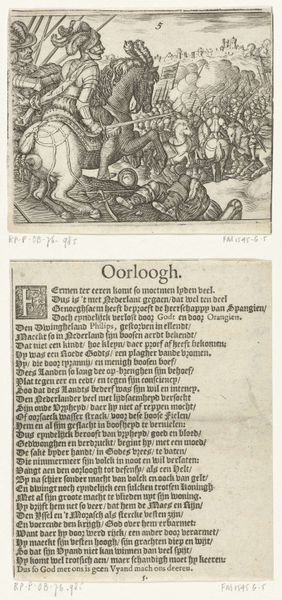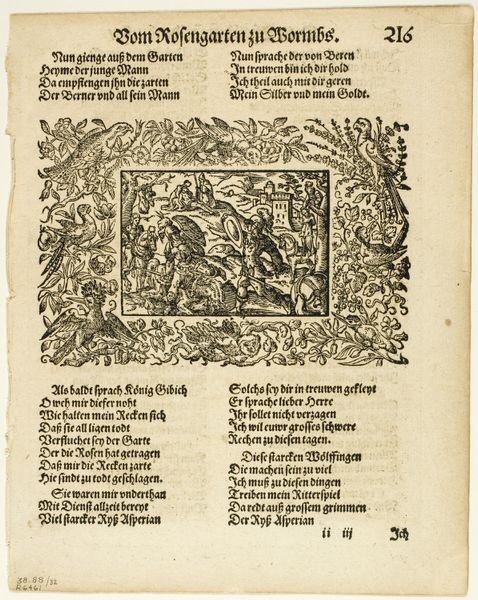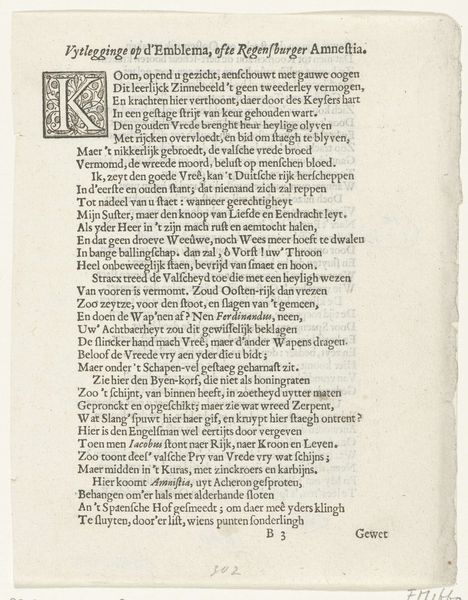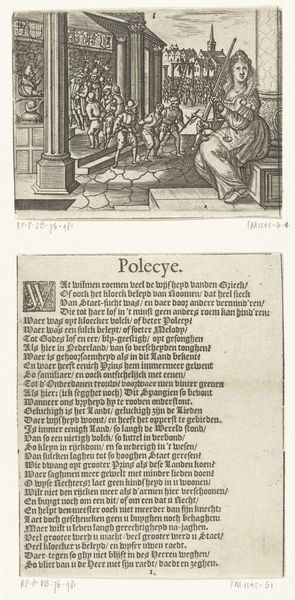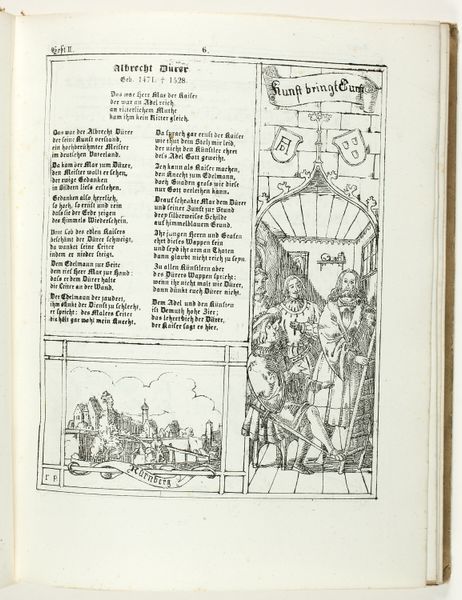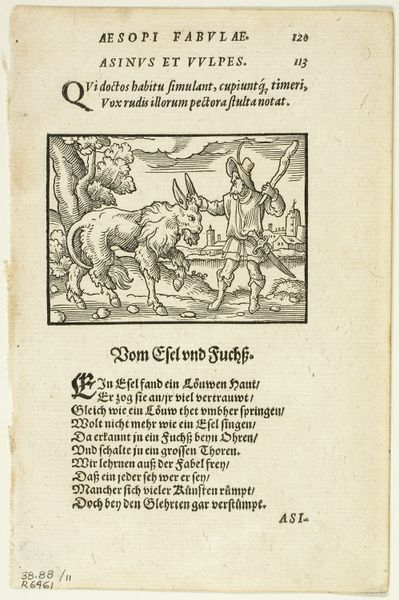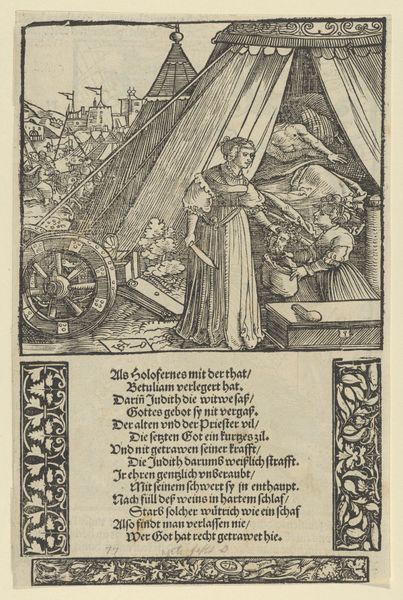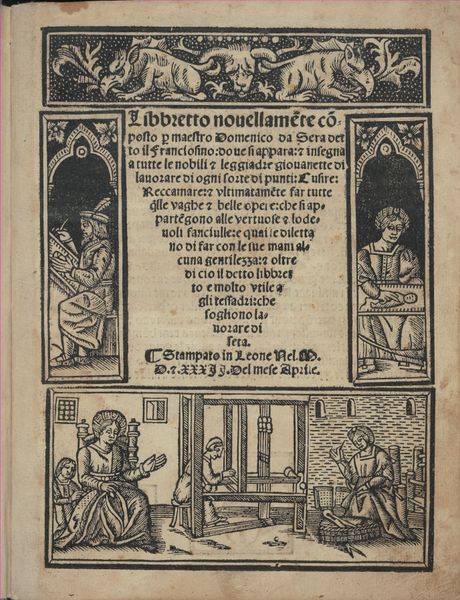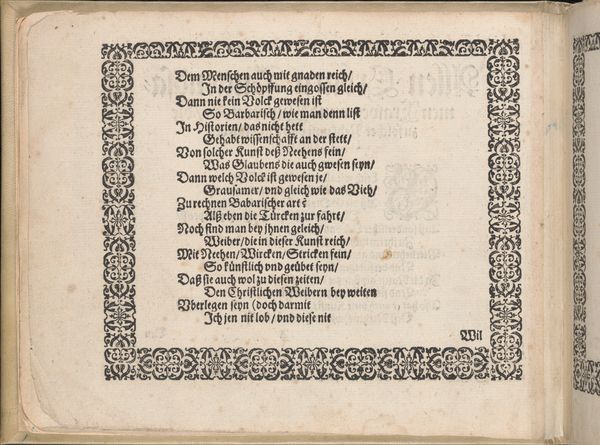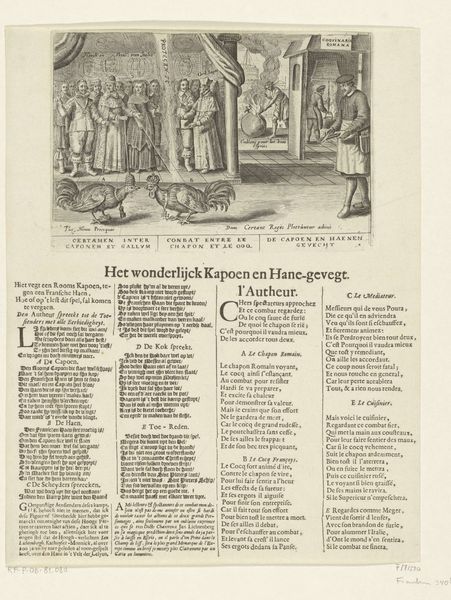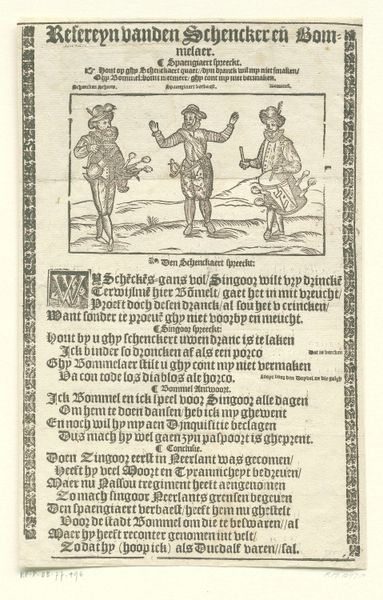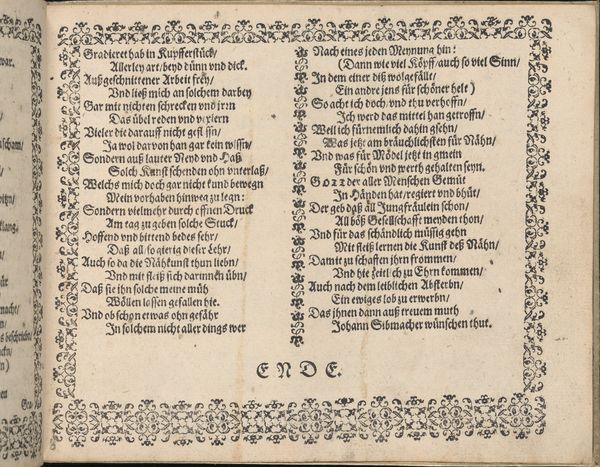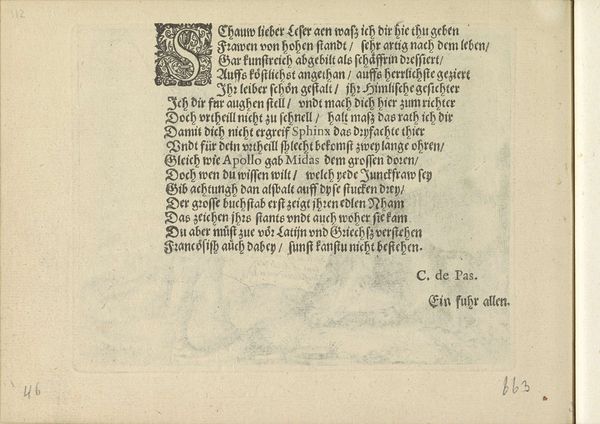
drawing, print, intaglio, pen, engraving
#
drawing
#
baroque
# print
#
intaglio
#
old engraving style
#
pen
#
history-painting
#
engraving
Dimensions: height 93 mm, width 121 mm, height 147 mm, width 123 mm
Copyright: Rijks Museum: Open Domain
Curator: Here we have a fascinating engraving from the 1620s, titled "Ware Godsdienst," which translates to "True Religion." It's currently held at the Rijksmuseum. The print appears to be an intaglio work featuring pen and ink, although the specific artist remains anonymous. Editor: My immediate reaction is of austere solemnity. The rigid lines of the architecture coupled with the attentive congregation create a deeply serious atmosphere. It’s not exactly inviting, is it? Curator: Perhaps not "inviting" in a conventional sense, but compelling nonetheless. Notice how the artist uses the architecture—the columns, arches, and the towering pulpit—to create a sense of hierarchy and order. This spatial arrangement reinforces the authority of the speaker, directing our gaze towards them. Editor: True. The perspective definitely draws you in, but I can’t help but focus on the seated figure in the foreground. He looks rather weary, burdened almost. What is his symbolic role? Curator: I interpret him as representing the contemplative aspect of faith, the individual engagement with scripture and theological discourse. He’s separated from the active congregation, suggesting a different, more internal path to understanding "True Religion." The book he holds symbolizes the importance of literacy and personal interpretation during the Reformation period. Editor: I see. It's interesting to consider the relationship between the individual and the collective experience of faith, then. And look at how the light and shadow emphasizes the folds of their clothes in the engraving. This choice lends the overall impression of great depth. Curator: Precisely. Also, observe the sea of heads representing the congregation. Each is a testament to the collective nature of faith but reduced to a symbolic representation, where they follow, almost mindlessly perhaps, the priest figure. This highlights a complex and shifting dynamic in religious authority. Editor: And that text beneath the image? Does that clarify the engraving's political purpose further? Curator: The text provides a poetic explanation of the image, acting as a guide and clarifying the engraving’s focus on true worship over that of its Babylonian or Catholic counterpart. It’s calling upon individuals to renounce worldliness and embrace a more sincere form of faith. The text and image serve as a united commentary reflecting on contemporary socio-religious themes. Editor: Well, delving into those symbolic and historical layers really has illuminated this seemingly severe image. It’s less about rigid adherence now and more about a multifaceted engagement with faith, both personal and communal, particularly during a period of immense social change. Curator: Exactly. And sometimes, it's in those complexities, those seeming contradictions, that the true value of a work like "Ware Godsdienst" resides. It prompts us to question, to analyze, and ultimately, to reflect on the enduring human quest for meaning.
Comments
No comments
Be the first to comment and join the conversation on the ultimate creative platform.
